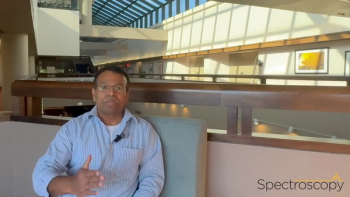
Stress Testing Silicone Insulators
Dennis Hore presented his team’s research on silicone insulators used in the electrical grid and their responses to electrical, chemical, and thermal stress.
Electrical insulators are one of the most important components of the electrical grid–and they also fail regularly, resulting in frequent disruptions to the power supply.
Insulators are traditionally made from porcelain or glass, said Dennis Hore, a professor at the University of Victoria during a presentation on October 10 at SciX in Sparks, Nevada. But these materials have a short lifetime, are expensive to produce, and are often hard to recycle, he said.
“These insulators are one of the most failing components of the electrical grid,” Hore said. The market to replace these materials is estimated to be $1 trillion in the US and Canada, he added.
Because of these challenges, scientists are looking for new materials to manufacture insulators and silicone has presented itself as a viable alternative. Research has shown that silicone insulators prove stable under a variety of conditions.
“One of the up-and-coming materials that is already seeing some uptake all around the world is the composite polymer insulators,” he said. “These are poised to overcome these challenges, largely on account of the remarkable properties of silicone.”
Hore and his research team wanted to understand how silicone-based insulators would perform under stress conditions. To test this, the team exposed the insulators to both chemical and electrical stress.
“We have a concentrated salt solution and then we have a rotor in the middle that rotates these through salt water,” he said. As the rotator moves, the material is exposed to 40,000 volts.
“It’s like a lightshow in the lab,” he said. “It’s fireworks every 40 seconds.”
The overall goal of the project, Hore said, was to understand how silicone surfaces were altered under exposure to environmental conditions. The team also wanted to further understand the aging process that leads to water ingress.
One of the most important characteristics of silicone is its hydrophobicity, or its ability to repel water. To better understand the behavior of silicone insulation, there needs to be better methods for characterization, Hore said.
“There’s a lot of engineering literature on this. It’s such an environmentally important topic,” he said.
Newsletter
Get essential updates on the latest spectroscopy technologies, regulatory standards, and best practices—subscribe today to Spectroscopy.





